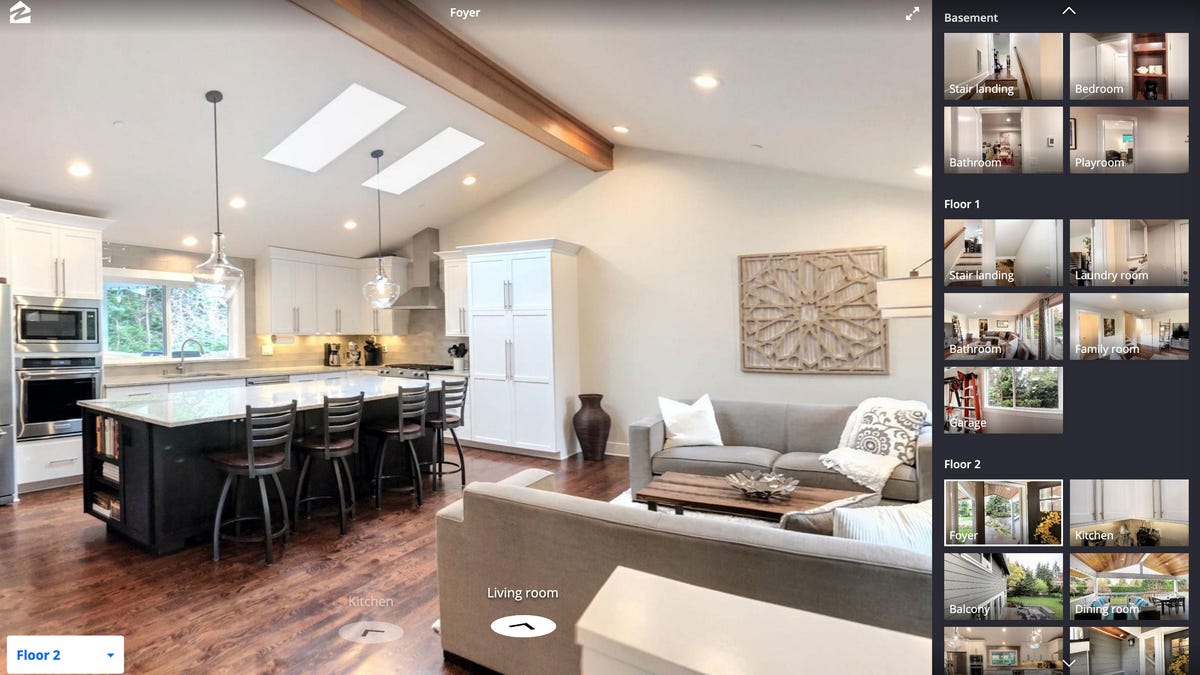Zillow uses VR to try to make online real estate more authentic
The 3D Home feature is designed to give a more authentic view to help people fretting over a potentially very expensive purchase.

Zillow's 3D Home tool lets real estate agents show immersive VR views of homes for sale. You click arrows at the bottom to navigate from room to room or select rooms from the right side of the page.
Real estate is getting a bit more virtual with 3D immersive tours at Zillow, a major player in online home sales.
The company added a feature called 3D Home to its site and app Monday that lets you step from virtual room to virtual room as you're shopping online. Real estate agents can capture the imagery using an iPhone or Ricoh's 360-degree cameras like the Theta V and Theta Z1.
The result, Zillow hopes, is you should get a better feel for what might well be one of the most expensive purchases in your life. Virtual reality has limited mainstream appeal, even among gamers, but it still holds potential for when you want to be transported to a different realm.
"One of Zillow's core goals has been to make buying and selling homes dramatically easier," said Josh Weisberg, Zillow's product leader for 3D and computer vision. "Giving a buyer or renter an immersive or authentic sense of what a home is like is a big step toward making the overall real estate transaction more seamless."
Think of it as the Tinder profile photo problem but for houses. Everybody wants to look their best in an online dating profile, but it's a problem when would-be dates don't find out soon enough you're not a 10/10. If expectations are too far from reality in real estate, negotiations are a waste of time for both buyer and seller.
For now, stepping through the 3D home is like using Google Maps' Street View: you see arrows that let you click or tap around to different rooms. You won't be swooping through a 3D zone like you might in a VR video game.
Zillow's 3D Home tool captures imagery from iPhones or Ricoh Theta 360-degree cameras and processes it. That includes HDR processing for tricky exposure situations like nighttime views.
Later, Zillow hopes to speed up the virtual room display and make it smoother to virtually travel around, with better reconstructions of the perspectives between camera positions. And the company expects to add an ability to automatically generate floor plans, another useful addition for buyers and sellers.
Zillow's 3D Home tool is designed to be easy for photographers to use so home sellers and their agents can add the 3D views affordably to ordinary homes for sale, not just luxury mansions, Weisberg said. Photographing a 3,000-square-foot home takes about 10 or 15 minutes, with shots taken for each room.
The idea is to make 3D home tours more accessible to people who don't have expensive photography setups, which can involve lots of labor and expensive gear. Now the Zillow app captures the imagery, processes it into a 3D map then presents it online.
"The overwhelming major of home sales are under $1 million, so it's been a struggle," Weisberg said. "If you're a buyer of one of these homes, you don't get access to these more immersive experiences."

